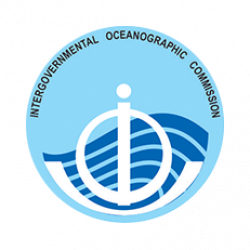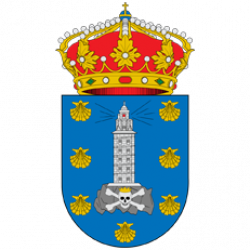Description of the action / project
Contexte
Coral colonies are made of hundreds of polyps, an invertebrate animal, living in symbiosis with a microscopic algae living in its tissues.
The polyp is host to the algae, which in return photosynthesises the food for the polyp. The polyp grows a calcium carbonate skeleton in order to expand the colony and accommodate new polyps. Like this, they have been thriving under the sun in the warm waters all around earth relying solely on their understanding. Under heat stress, the algae dies inside the polyps’ tissues causing the polyps to expel the algae, depriving themselves of their food source. The polyp is in fact transparent, and the algae gives it colouration. After the algae has left, the immaculate whiteness of the skeleton is left as if bleached. The polyps are thereafter getting weaker and may not survive if the water temperature stays high.
In 1998, we witnessed the devastating effect of an usual sea surface temperature increase, with 90% of coral mortality down to 15m, and similar events more recently in 2010. However well we control the carbon emissions, the warming forecast due to the inertia of the system alone is alarming. Scientists predict the demise of coral reefs by 2050, which leaves us very little time.
In a country which owes its very existence to reef building corals, their death will directly affect the livelihood of the population. The whole setting in which the Maldivians evolve will be changed. The most dramatic consequence of them all would be the disappearance of the island themselves. Dead corals will indeed not grow upwards and keep up with rising sea levels.
Of course, there will be technical solutions to this problem, and some of them are already being implemented at large scale. Humans may finally be safe, constrained to a number of heavily fortified islands, but this has a cost far greater than that of the infrastructure!
Even though some local impacts are affecting the reef and could be better managed, the forecast temperature rise is equivalent to an ecological tsunami for the Maldivian coral reef ecosystem. The required rate of evolution for certain species may be faster than what is possible. As proof, the off springs of the 1998 survivors died in 2010. A demise of the corals will cause the disappearance of the many species depend on corals for their very existence.
In areas, Reefscapers installed thriving reefs in areas excavated for beach replenishment. In what was left as a grave yard we have created a thriving reef in a few years, with lots of fishes, a lot of them juveniles. Better still, these reefs are not fished at all and act as small scale marine protected areas. Through a greater mastery of the transplantation and increased understanding of the ecological processes, we will learn ways to engineer the marine environment in order to make it more diverse, more productive, help with aesthetics, recreational aspects and even coastal protection.
Corals are the major building blocks of this ecosystem, yet we know very little about how to manipulate them. Only a few years back, coral propagation was criticized as ineffective, causing more death than growth, but the success of the Reefscapers, among others, is turning the tables. On the land, we have very much learnt to manipulate trees, select them in order to get them adapted to different environments. It is time we take a similar direction for corals, learn more about their in situ characteristics, select them for their resistance and propagate them efficiently.
Today, Reefscapers runs pioneering projects at the two Four Seasons islands of Kuda Huraa and Landaa Giraavaru in the Maldives. Sponsored by the Resorts and their guests, the transplantation process involves attaching coral fragments onto a coral frame – produced by a local co-operative of eight employees – to boost existing reef habitats and generate new ones.
To date, the project has deployed over 3000 coral frames in the waters around the two Resorts, covering an area in excess of one hectare and featuring over 40 thriving species of corals. Some corals have been specially selected to help re-establish severely threatened fish species, including Gobiodon citrinus (citron goby), which all but disappeared from the northern atolls of the Maldives following the devastating bleaching event of 1998, which killed 90% of the country’s shallow water corals.
Transplanting the corals successfully is just the start of the process. The exact location of each coral genotype is logged on a central database to help the team identify species better suited to higher water temperatures and therefore more resilient to coral bleaching events. Then a strict process of monitoring and recording commences, with each frame regularly inspected and photographed, with maintenance work undertaken when necessary. Photographic evidence of each coral frame’s growth is used to retrieve information of species competition and fish fauna supported, while temperature gauges are used to monitor the health of the reefs around local uninhabited islands and assess anthropogenic impacts on the Resorts’ corals.
Méthodologie
Contraintes
Mise en œuvre du projet
- Attach coral fragments to the thriving reefs (frames) using cable ties. After the frame is deposited, the location and identify of each genotype is meticulously logged in a central database.
- Register the exact location of each coral genotype on a central database to help the team identify species better suited to higher water temperatures and therefore more resilient to coral bleaching events.
- Then a strict process of monitoring and recording commences, with each frame regularly inspected and photographed, with maintenance work undertaken when necessary.
- Photographic evidence of each coral frame’s growth to retrieve information of species competition and fish fauna supported, while temperature gauges are used to monitor the health of the reefs around local uninhabited islands and assess anthropogenic impacts on the Resorts’ corals.
Durée du projet
Partenaires
- Four Seasons Resorts Maldives, Landaa Giraavaru
The birthplace of the coral frame! Following the Tsunami of 2004, the Four Seasons dive team helped salvage thousands of coral colonies, helping in our very first successful attempt to use the coral frames to mitigate construction impacts.
- Four Seasons Resorts Maldives – Kuda Huraa
The Sunrise side in Kuda Huraa is one of the finest reefscapes. This dredged channel is now flourishing with corals, and hosts a vibrant fish life.
- One&Only Reethi Rah
This recently started project brings promises of some exciting reefscapes at a great resort!
- Club Med Kani
Our new partnership, started in 2013. Club Med Kani
- Cocoa Island by COMO
Launched by Cocoa Island in September 2013, we aim to develop the coral around the resort and create awareness about the vulnerability of reefs.
- Reethi Beach Resort
This reef was heavily impacted during the warm 2010 event, and our small scale work validates the method at another location.
Documents de projet à télécharger
THE PROJECT
Objectives
- Save the coral reefs which are slowly dying and as a consequence jeopardise the foundations of those islands.
- Preserve the living ressources and the biodiversity. Coral reefs act as refuge areas for animal post-larvae and source of spawn for the coral species propagated. Moreover, the reimplanted corals close to the coasts protects the ones that are growing deeper from the tourists by offering them diving spots. The resorts in which the program is run offer their guests the possibility of sponsoring their own structure to be grown in the lagoon.
- Reduce disaster risk and improve disaster management by increasing the corals’ reproduction.
Category
Biodiversity, Marine and Coastal Habitat
Contributor’s information
Thomas Le Berre
Date
2001
Project’s title
Reefscapers
Area
Asia-Pacific










